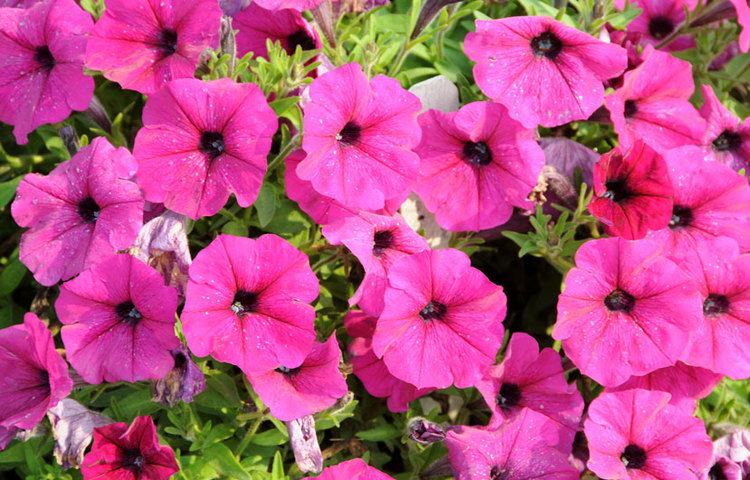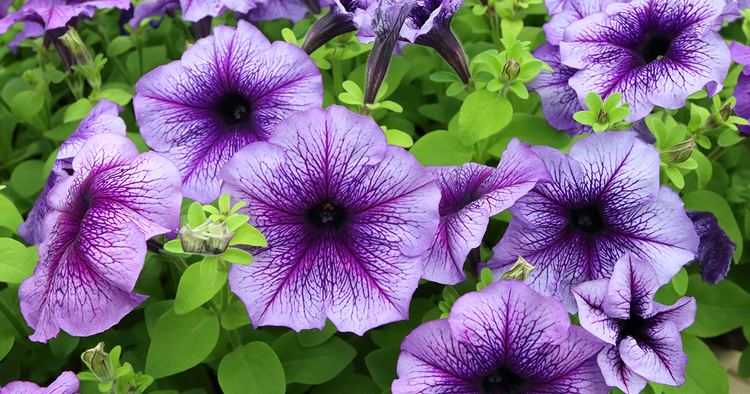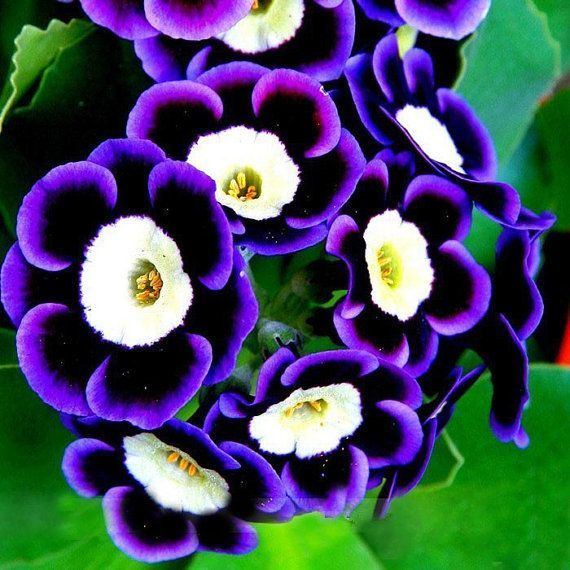Scientific name Petunia Rank Genus | Subfamily Petunioideae Higher classification Petunioideae | |
 | ||
Similar Surfinia, Begonia, Geraniums, Pansy, Calibrachoa | ||
Petunia is genus of 35 species of flowering plants of South American origin, closely related to tobacco, cape gooseberries, tomatoes, deadly nightshades, potatoes and chili peppers in the same family, Solanaceae. The popular flower of the same name derived its epithet from the French, which took the word petun, meaning "tobacco," from a Tupi–Guarani language. An annual, most of the varieties seen in gardens are hybrids (P. × atkinsiana, also known as P. × hybrida).
Contents
- How far apart do you plant petunias how to grow maintain garden plants
- Description
- Taxonomy
- Ecology
- Cultivation
- Uses
- Species
- References

How far apart do you plant petunias how to grow maintain garden plants
Description
The plants are herbaceous, generally hairy, and the flowers are funnel-shaped, with petals joined together. The fruit is a dry capsule with two compartments and many tiny seeds.
Taxonomy
Petunia is a genus in the family Solanaceae, subfamily Petunioideae. Well known members of Solanaceae in other subfamilies include tobacco (Nicotianoideae), and the cape gooseberry, tomato, potato, deadly nightshades and chili pepper (Solanoideae). Some botanists place the plants of the genus Calibrachoa in the genus Petunia, but this is not accepted by others. Petchoa is a hybrid genus derived from crossing Calibrachoa and Petunia.
Ecology

Petunias are generally insect pollinated, with the exception of P. exserta, which is a rare, red-flowered, hummingbird-pollinated species. Most petunias are diploid with 14 chromosomes and are interfertile with other petunia species.

The tubular flowers are favoured by some Lepidoptera species, including the Hummingbird hawk moth. The flowers are eaten by the larvae of the corn earworm, Helicoverpa zea and the cabbage looper, Trichoplusia ni.
Cultivation
Petunias can tolerate relatively harsh conditions and hot climates. They need at least five hours of sunlight every day. They grow well in low humidity, moist soil. Young plants can be grown from seeds. In drier regions, the plants should be watered daily. Maximum growth occurs in late spring. Applying fertilizer monthly or weekly, depending on the variety, will help the plant grow quickly. Petunias can be cultivated in hanging baskets.
In horticulture many terms are used to denote different types of cultivated petunias. These include Grandiflora, Multiflora, Wave (Spreading), Supertunia, Cascadia, and Surfinia.
Uses
Many species other than P. × atkinsiana are also gaining popularity in the home garden. A wide range of flower colours, sizes, and plant architectures are available in both P. × atkinsiana and other species, listed below:
Species
Species include:
